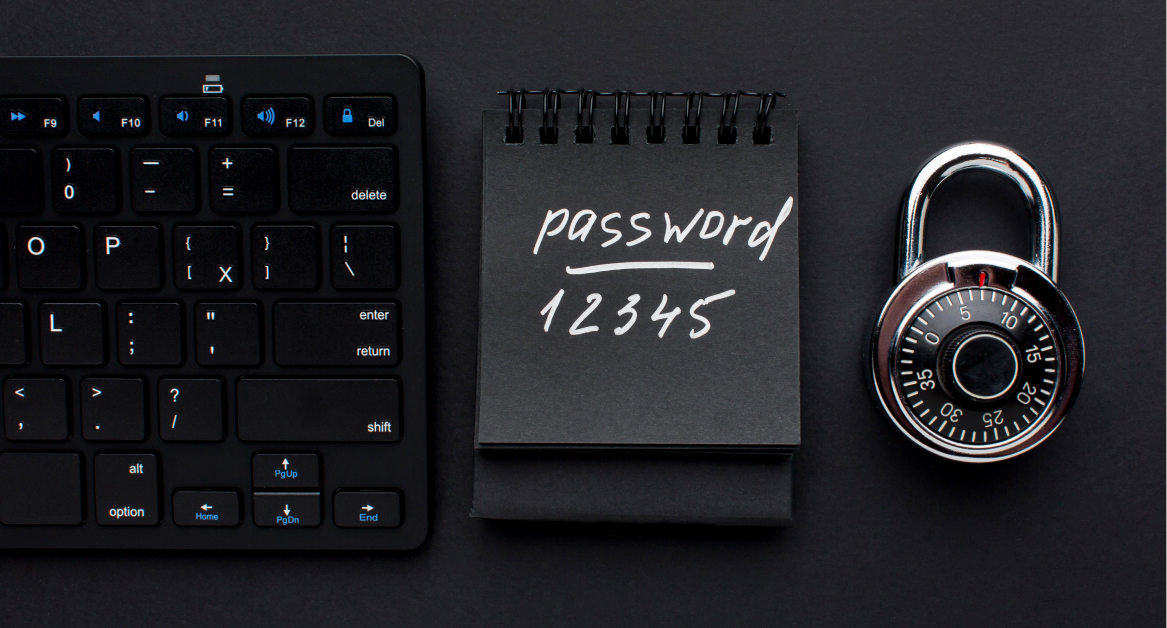Remembering multiple login credentials is a pain. From email accounts to online banking to shopping apps, the list of usernames and passwords only seems to grow.
That’s where a password manager can make life easier—and more secure.
If you’re using a Samsung device, you already have one built-in: Samsung Pass. It acts as your personal password manager, making it easy to log in to websites and apps using biometric authentication like your fingerprint or face.
In this guide, we’ll take a close look at what Samsung Pass does, how it stacks up against other options, and how to use it to improve your digital security.
What is the Samsung password manager?
Samsung’s password manager is officially known as Samsung Pass. It’s a built-in tool on most Samsung Galaxy devices that helps users securely store and autofill their ID and password information for websites, apps, and other services.
Instead of typing out passwords manually every time, Samsung Pass allows you to log in with just a fingerprint scan or facial recognition. That means faster access and fewer forgotten passwords—without sacrificing security.
But Samsung Pass isn’t just a convenience tool. It also uses advanced biometric authentication and encryption to keep your login data protected. All stored data is encrypted and kept in the device’s secure hardware-backed storage, known as Samsung Knox.
Here’s what Samsung password manager can do:
- Autofill login credentials for websites and apps
- Store personal information like addresses and credit cards
- Use biometric data (fingerprint or face) for authentication
- Sync saved data across Samsung devices with your Samsung account
If you’ve ever used Google Password Manager or Apple Password Manager, Samsung Pass works in a similar way—except it’s built directly into the Samsung ecosystem. It’s particularly useful if you’re working in a remote or hybrid team where secure, fast access to tools and platforms matters.
It also supports single sign on for certain Samsung apps and services, allowing you to log in once and gain access to a wide range of connected apps without entering your credentials repeatedly.
Key features of the Samsung password manager
Whether you’re juggling multiple work accounts or just want a faster way to log in to your favorite apps, Samsung Pass offers several features that make it a powerful built-in solution.
Here are the key features that make Samsung Pass stand out:
1. Biometric authentication
One of the biggest benefits of Samsung Pass is its use of biometric authentication. Instead of typing in your ID and password every time, you can unlock accounts with your fingerprint or face scan. This makes logging in not only faster but also more secure, since your biometric data is harder to hack than a password.
2. Autofill for apps and websites
Samsung Pass can automatically fill in login credentials when you visit apps or websites you’ve previously saved. It works with the Samsung Internet browser and is compatible with many third-party apps. Once set up, all it takes is a fingerprint scan to get logged in instantly.
3. Secure storage with Samsung Knox
All data stored in Samsung Pass is encrypted and secured through Samsung Knox, the company’s defense-grade security platform. This means your passwords, personal information, and biometric data stay safe—even if your device is lost or stolen.
4. Sync across Samsung devices
When you log in with your Samsung account, your saved credentials can sync across your Galaxy devices. If you set up Samsung Pass on your phone, you’ll also have access to those passwords on your Samsung tablet or other linked devices. This makes it easier to manage access without starting from scratch on each device.
5. Personal information storage
Beyond passwords, Samsung Pass lets you securely store personal information like:
- Credit card numbers
- Shipping addresses
- Contact details
This helps speed up online purchases and form-filling without sacrificing security.
6. Single sign on for Samsung services
Samsung Pass supports single sign on, allowing you to use one login to access multiple Samsung services. This streamlines your experience across Samsung apps like Galaxy Store, Samsung Cloud, and Samsung Members, reducing the friction of logging in again and again.
8 tips for better security with Samsung password manager
Samsung Pass does a solid job protecting your login information—but like any digital tool, it’s only as strong as the way you use it. To get the most out of it and ensure your sensitive data stays protected, here are a few practical tips to keep in mind:

1. Use strong, unique passwords
Even though Samsung Pass helps you remember your credentials, it’s still up to you to set strong, unique passwords for each account. Avoid using the same ID and password combination across multiple platforms. Use a mix of upper and lowercase letters, numbers, and symbols.
2. Turn on biometric authentication
Biometric authentication is one of Samsung Pass’s biggest strengths. Make sure it’s enabled for maximum security. Whether it’s fingerprint or facial recognition, this extra layer of protection makes it much harder for anyone else to access your accounts—even if they get your phone.
3. Keep your device software up to date
Regular software updates help patch vulnerabilities that hackers can exploit. Always keep your Samsung device updated to the latest version of Android and One UI to ensure Samsung Pass and its security features work as intended.
4. Enable two-factor authentication (2FA) for critical accounts
Samsung Pass simplifies login, but for your most sensitive accounts—like banking or email—it’s smart to add another layer of protection. Many services allow you to enable 2FA, which sends a code to your phone or email whenever someone tries to log in.
5. Lock your device when not in use
This might sound basic, but it’s often overlooked. Always lock your device with a secure method—like a fingerprint, PIN, or pattern. If someone gets physical access to your device, you want to make sure they can’t open it easily.
6. Review your saved data regularly
Make it a habit to check your saved passwords and personal information. Delete outdated entries and update any weak or reused passwords. Samsung Pass gives you a centralized place to manage it all, so take advantage of it.
7. Avoid public Wi-Fi for sensitive logins
Samsung Pass can fill in your passwords securely, but if you’re connected to an unsecured public Wi-Fi network, you’re still at risk. If you need to access sensitive information on the go, consider using a VPN for extra protection.
8. Compare with other password managers
It’s worth noting how Samsung Pass stacks up against others like Google Password Manager or Apple Password Manager. Each one has its pros and cons, but Samsung Pass is ideal for users who are deeply integrated into the Samsung ecosystem and want a native solution with strong biometric capabilities.
Troubleshooting common issues with Samsung password manager
Samsung Pass usually works seamlessly in the background—but like any technology, things don’t always go as planned. If you’re running into problems, here are some common issues and how to solve them.
1. Samsung Pass not recognizing fingerprints or face
The issue: Biometric authentication fails, even though it’s been set up before.
Fixes to try:
- Re-register your fingerprint or face in device settings
- Make sure the biometric sensor is clean and not obstructed
- Restart your device to refresh background services
- Ensure screen protectors or dirt aren’t interfering with the sensor
2. Autofill not working on websites or apps
The issue: Samsung Pass doesn’t automatically fill in your ID and password.
Fixes to try:
- Make sure Samsung Pass is enabled under Settings → Biometrics and security → Samsung Pass → Autofill forms
- Check that the app or website is supported by Samsung Pass (it works best with Samsung Internet)
- Try clearing the cache of the Samsung Pass app
- Reinstall or update the Samsung Internet browser if you’re using it
3. Samsung Pass not syncing across devices
The issue: Your passwords are saved on one device but aren’t showing up on another.
Fixes to try:
- Ensure you’re logged in with the same Samsung account on both devices
- Check that sync is turned on in Samsung Pass settings
- Make sure both devices are connected to the internet
- Try logging out and logging back in to your Samsung account
4. Can’t add or save login credentials
The issue: Samsung Pass won’t let you add new passwords or websites.
Fixes to try:
- Check if Samsung Pass has the necessary permissions (Settings → Apps → Samsung Pass → Permissions)
- Update your Samsung device to the latest software version
- Clear the Samsung Pass cache or data (note: clearing data will remove saved logins, so back up if needed)
- If the problem persists, try resetting Samsung Pass and setting it up again
5. Login credentials disappeared
The issue: Saved logins suddenly vanish or no longer appear.
Fixes to try:
- Verify you’re logged into the correct Samsung account
- Go to Samsung Pass settings and confirm that syncing is active
- If recently updated, wait a bit—sometimes sync takes time
- Reach out to Samsung support if credentials are still missing
Samsung Pass is a convenient and secure tool, but it’s not perfect. If you run into ongoing issues, don’t hesitate to contact Samsung’s customer service or explore alternative tools.
Simplify and secure your digital life with the right IT partner
Samsung Pass is a solid tool for individuals looking to manage their passwords more efficiently, especially if they’re already using a Samsung device. But for businesses—especially startups and growing teams with hybrid or remote workforces—password management is just one piece of a much bigger IT puzzle.
At Esevel, we help companies simplify and secure their entire IT setup—not just passwords. From device provisioning to onboarding and offboarding automation, we give teams the tools they need to stay productive and protected, no matter where they’re located.
Here’s how Esevel supports your team:
- Centralized device management: Track and manage all company devices in one place, with full visibility over inventory and usage
- Automated provisioning and de-provisioning: Get new employees set up with the right tools on day one—and ensure secure access revocation when someone leaves
- Advanced device security: Implement consistent security policies across devices, including encryption, firewalls, and remote access control
- Global IT support: Our 24/5 real-time IT support ensures your team stays up and running, wherever they are
- Cybersecurity compliance: Maintain compliance and reduce risks with built-in security protocols and policy automation







